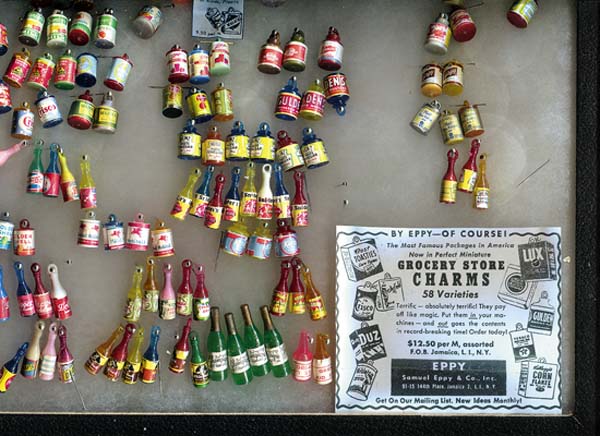Gumball charms have interested me since I waslittle kid, and still do.When I was a kid in the 1950s, we caught the school bus at a local gas station/old time grocery store in York, Pa.There was only one gumball machine per establishment. We would put our pennies into the machine hoping to get the little gumball charms that came along with the gumball itself. Over those school years, I accumulated quite a collection of the little plastic charms and put together many sets. About 30 years ago, cleaning out some of my things, my mother gave me my big jars filled with charms, and I fell in love with them all over again. Since then and continuing now that I have retired from a teaching career, Ive been growing and specializing the collection through eBay and antique co-ops.I buy and trade to complete certain sets and have accumulated over 15,000, which are mostly displayed in glass-front jewelry cases. These cases can also easily be hung on the wall. The history of the gumball charm business began with the Eppy Co. in New York.Samuel Eppy started manufacturing the copper, silver, and gold flashed or coated charms, opening the Samuel Eppy Co. in Jamaica, N.Y.,in 1938. According to researcher Jeffrey Maxwell, Samuel Eppy was a leader in the bulk vending industry who pioneered both vacuum plating and vacuum metalizing for plastics. Vending companies used these plastic charms to boost gum sales, putting them in capsules (small gum-filled eggs). In the heyday of vending machine charms, in the 1940s and 50s, Eppy was considered the largest manufacturer. For years, I corresponded with Mrs. Samuel Eppy, who wrote the large molds weighed a thousand pounds each. Sand-like material was poured into the mold and baked, like muffins, she wrote.Mrs. Eppy worked on the production line in the early 40s and wrote that girls would take the baked-like charms and paint them with different colored lacquer. The girls would wrap some varieties by hand. When the charms were ready, they were bagged to be sold to vendors. In one letter, Mrs. Eppy stated she and the other workers would play with the beautiful colored charms. Mrs. Eppy sent me copies of promotion sheets the company sent to gumball machine vendors. Companies would order charms from the sheets, which had black and white photos of what was available and the price per thousand. The Food & Drug Admistration stepped into the gumball machine business in the 1950s as machine vendors had the charms in with the gumballs.Lacquer from the charms rubbed off on the gumballs. The charms pictured here showcase a small fraction of what Ive put together.Much of my interest over the years has been complete sets of certain types of charms, and its truly been a fun pursuit.
Antiques & Auction News is owned and published by Engle Printing & Publishing Co., Inc. and is the source for marketplace news on art and antiques.









